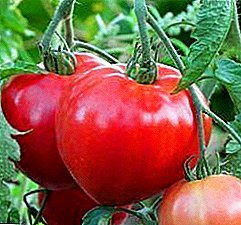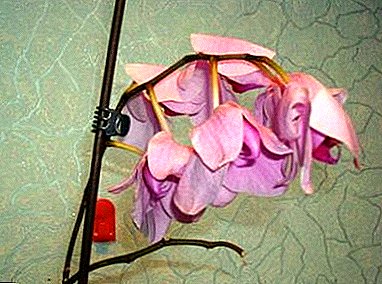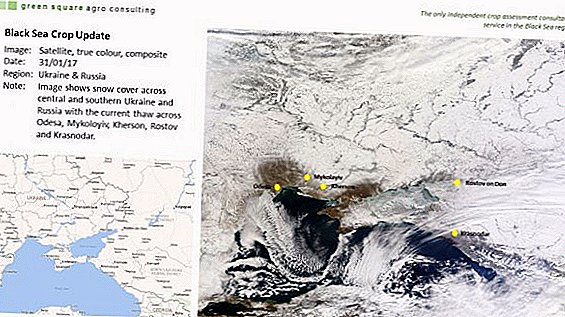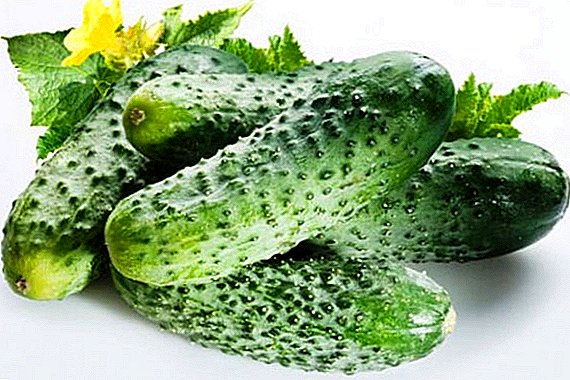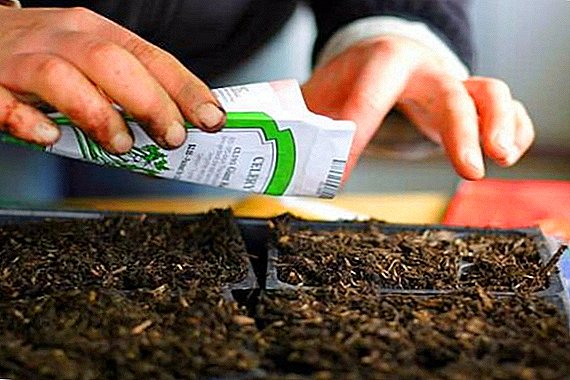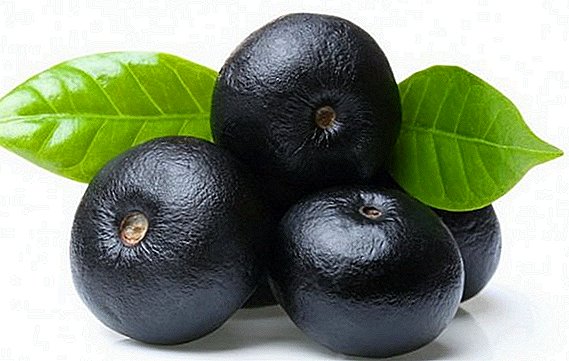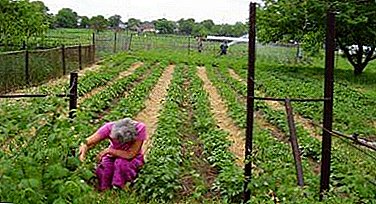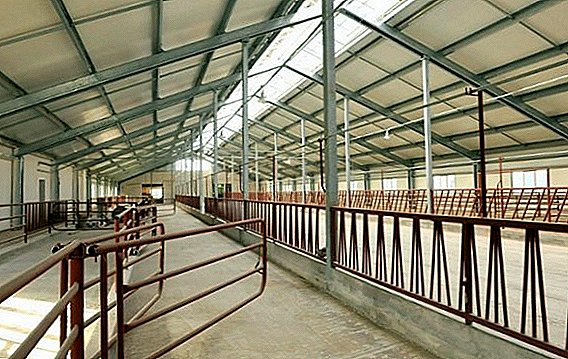 The floors in the barn - an important detail for the healthy maintenance of animals.
The floors in the barn - an important detail for the healthy maintenance of animals.
The herd has considerable weight, so, first of all, the material for the flooring should be durable.
What other characteristics should have a building material for the floor in the barn, and which one is more suitable, let's look at this article.
What to do for the floor of the cow in the barn
When choosing a material for construction, one should pay attention to its ability to retain heat, absorb or repel moisture, and the ability to withstand loads. No less important is the raw material used in the manufacture of the material: how toxic it is, whether evaporation will not harm the burenkas.
Did you know? In terms of the number of mammals in the world, cows rank second after humans. And in Australia there are 40% more cows than people.
Wood
The advantages of a wooden coating - in its environmental friendliness, as well as in the fact that it keeps heat well. The rest of the tree for the floor is not recommended, because it quickly absorbs moisture and odors, this property speeds up the aging process of wood, its rotting.  The tree can not withstand the weight of the herd, in addition, dozens of hooves will leave a recess on it, then the animal can stumble and be injured here. The tree is difficult to disinfect and clean up from feces, thus, the material loses in the matter of barn hygiene.
The tree can not withstand the weight of the herd, in addition, dozens of hooves will leave a recess on it, then the animal can stumble and be injured here. The tree is difficult to disinfect and clean up from feces, thus, the material loses in the matter of barn hygiene.
It will also be useful for you to learn how to build a cow shed with your own hands, how to make ventilation in it, how to make a stall and drinkers yourself.
Cement or concrete
Concerning concrete and cement, opinions are contradictory:
- one side - the material is durable and durable, does not let moisture, it is easy to clean, wash, disinfect;
- on the other hand - the concrete is cold, such a floor will provoke diseases in animals, in particular, mastitis in chicks, reducing their productivity.
However, after weighing all the pros and cons, most farmers use concrete. The lack of heat is compensated for using warm bedding, for example, livestock mats. 
Burnt brick
The brick is made from clay, which is then burned for strength, and is hollow and solid without voids.
Among the advantages of the material:
- environmental friendliness;
- insulation;
- heat insulation;
- fire resistance;
- resistance to corrosion and fungi.
The main disadvantage is the high cost compared to other materials, in addition, the brick is not able to withstand a large load. Hooves will leave cracks, vycherbin, which over time will begin to pass moisture. Brick is more suitable for the walls of the building.
Samana (unfired)
The peculiarity of adobe is that in its manufacture clay and straw are used. To make it complete, it is not burned, and dried in the sun. The product is obtained entirely natural.  Advantages of adobe:
Advantages of adobe:
- low cost;
- heat and noise insulation;
- fire resistance;
- hygroscopicity
Minuses:
- protection against moisture in the form of plaster is required;
- material subject to fungi and insects;
- doubtful frost resistance in severe winter conditions.
| Material | Operating humidity (W / (m ° C) | Heat capacity (kJ / kg K) | Vapor permeability (m2 • h • Pa / mg) |
| Tree | 0,18 | 2,5 | 0,06 |
| Concrete | 1,45 | 0,88 | 0,03 |
| Brick | 0,4-0,8 | 0,84 | 0,11-0,17 |
| Adobe | 0,2 | 4,0-6,0 | 0,2 |
How to make a floor in the barn of concrete
Concrete floor is usually done over the ground, first taking some steps to increase the strength of such a foundation.
Did you know? The smallest cows in the world come from England, Cheshire. Growth Svolow at the withers - only 80 cm.
Foundation preparation
To prepare the soil for further work, remove the fertile layer. Now you need to calculate the zero floor height to determine the depth of the pit. After that, the soil is carefully tamped down, poured into a cushion of rubble, then sand.  The base under the concrete is carefully rammed (first crushed stone, then a sandy layer) to eliminate any irregularities, otherwise the concrete may burst. After these works a layer of waterproofing is laid, what material for this you would not choose, it should be laid overlapped.
The base under the concrete is carefully rammed (first crushed stone, then a sandy layer) to eliminate any irregularities, otherwise the concrete may burst. After these works a layer of waterproofing is laid, what material for this you would not choose, it should be laid overlapped.
Drainage facilities
The drain for the drain is usually made in the form of a gutter, while discharging the drain to the side outside the barn. The gutter is made about 30 cm wide and 15 cm deep so that the waste does not linger in it, freely rolling into the collection. To collect the slurry install special septic tanks - sealed containers.
The sizes of the collection are individual, here the convenience of the owner plays a role. In order to excrement directly into the drain, the floor is made under a bias towards the drain construction.
Bias
When filling floors take into account the differential, that is, the slope in the direction of the flow. To the sump do make a difference in the calculation of 2 cm per linear meter.
Screed thickness
Concrete pavement is made with the use of reinforcing mesh to strengthen the future floor. The recommended thickness of the screed at the slope to the drain - not less than 20 mm.
Full drying time
The timing of readiness screed depends on air temperature and humidity, on average it is two weeks. If the screed dries in dry and hot weather, it is necessary to moisten with water so that cracks do not appear on the surface. 
Laying on the floor in the barn
Whatever the floor in the stall, the animal should rest on a soft and dry surface. Litter for the cows can be prepared from different materials, the main thing is to make sure they are practical and convenient for animals.
Straw
Some farms use deep bedding, which is changed quite rarely, laying a new level of straw over the old layer. At the same time, natural flooring is obtained, but this approach is fraught with the development of microflora.
Important! To eliminate the appearance of fungi, each new layer of straw is poured with special antiseptic powders.
The second option is to change the straw as it is moistened; in this case, regular scheduled disinfection of the room is sufficient. 
Sawdust
Dry sawdust is good for large farms with enough staff, because they need to be changed frequently. The material absorbs moisture fairly quickly and absorbs odors poorly. Permanent layer replacement will require a large consumption of material.
Sawdust is not profitable for small farms, in addition, they can not be used as fertilizer, as manure with straw bedding.
Rubber plates
Increasingly, large and small farms are resorting to rubber mats as bedding.
Important! The best option are livestock mats made from crumb rubber: they are made taking into account the point load, are well absorbed, prolonging the health of the joints of cows, and retain heat better.
Consider, what is their advantage:
- low cost;
- possibility of multiple use (as opposed to sawdust or straw);
- ease of cleaning and disinfection;
- speed of drying;
- hooves on them do not slip, respectively, reduces the risk of injury;
- protect from cold on the concrete floor;
- strong enough, not deformed by the impact of the hoof;
- Do not let moisture through.
 As you can see, with the device of the barn you need to take into account all the nuances of the needs of the herd. Their health, life and productivity, respectively, and the income of the enterprise depend on the conditions of detention.
As you can see, with the device of the barn you need to take into account all the nuances of the needs of the herd. Their health, life and productivity, respectively, and the income of the enterprise depend on the conditions of detention.

